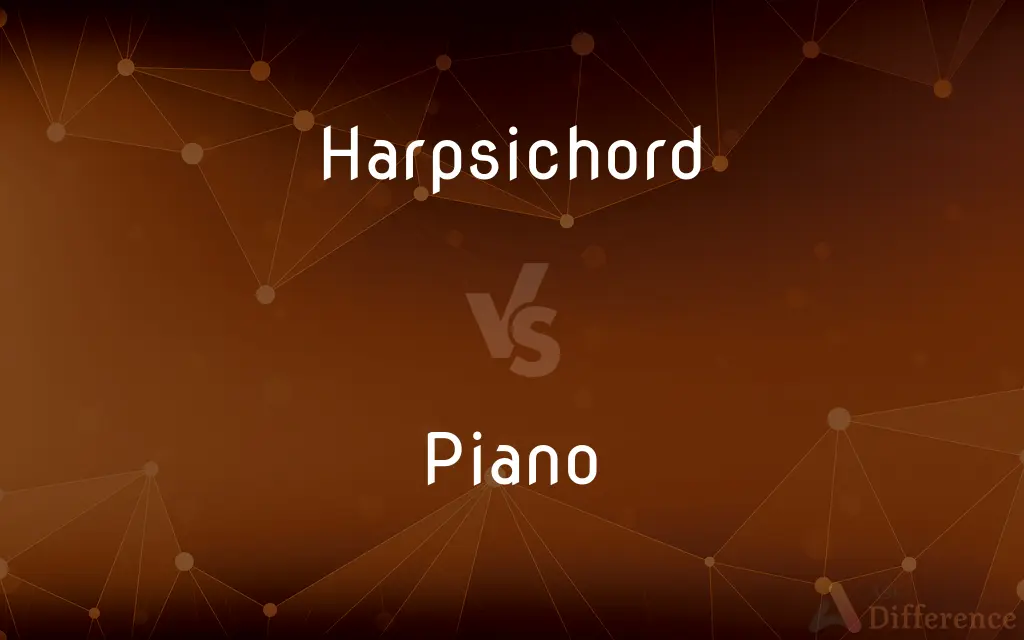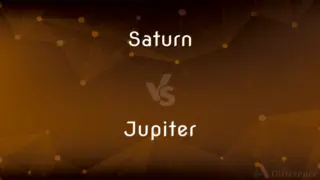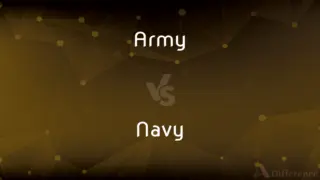Harpsichord vs. Piano — What's the Difference?
By Maham Liaqat & Fiza Rafique — Updated on March 25, 2024
The harpsichord produces sound by plucking strings, offering a distinct, bright timbre, whereas the piano creates sound by striking strings, allowing for dynamic expression through touch sensitivity.

Difference Between Harpsichord and Piano
Table of Contents
ADVERTISEMENT
Key Differences
The harpsichord, an early keyboard instrument, generates its distinctive sound through quills (originally made of bird feather) that pluck the strings when a key is pressed. This action results in a bright, resonant tone that has a relatively uniform volume, regardless of how forcefully the keys are played. On the other hand, the piano, a more modern invention, produces sound by hammers striking the strings, with the force of the strike being determined by how hard the player presses the keys. This mechanism allows for a wide range of dynamics, from very soft (piano) to very loud (fortissimo), giving the piano a significant expressive advantage over the harpsichord.
The harpsichord is often associated with Baroque and Renaissance music, where its clear, penetrating sound complements the intricate melodies and harmonies of the period. Its lack of dynamic range is compensated by its ability to play rapid, complex passages, making it ideal for the ornamental style of music from these eras. Whereas the piano's versatility and dynamic capabilities have made it a central instrument in classical, jazz, pop, and modern music, its ability to convey a broad spectrum of emotions and nuances has endeared it to composers and musicians alike.
While the harpsichord often features multiple keyboards or manuals, and sometimes includes stops that allow the player to change the tone color by engaging different sets of strings, these features are primarily for timbral variation rather than dynamic control. The piano, however, relies on its single keyboard and the pedals (most commonly the sustain pedal) to alter its sound, offering sustained notes and allowing for a richer harmonic blend.
Maintenance and tuning for harpsichords can be more complex due to their sensitive, mechanical action and the historical materials used, such as gut strings and plectra made from quill or plastic. Pianos, while also requiring regular tuning and maintenance, are built with more durable materials, making them better suited to a wider range of environments and uses.
The design differences between harpsichords and pianos reflect their unique roles in music history and performance. The harpsichord's design, optimized for speed and clarity in intricate musical passages, contrasts with the piano's emphasis on dynamic range and tonal variety, making each instrument suited to different musical genres and periods.
ADVERTISEMENT
Comparison Chart
Sound Production
Plucking strings with quills
Striking strings with hammers
Dynamics
Uniform volume, no touch sensitivity
Wide dynamic range, touch sensitive
Historical Era
Renaissance and Baroque
Classical to modern
Keyboards
Often multiple, with stops for timbral changes
Single, with pedals for sustain and dynamic changes
Maintenance
Complex, sensitive to humidity, requires frequent tuning
Durable, requires regular tuning, less sensitive to humidity
Repertoire
Suited for Baroque and Renaissance music
Versatile, used in classical, jazz, pop, and contemporary music
Expression
Limited by lack of dynamic control
Highly expressive due to dynamic control
Materials
Gut strings, quill plectra
Metal strings, felt-covered hammers
Compare with Definitions
Harpsichord
A keyboard instrument that produces sound by plucking strings.
The harpsichord's bright timbre is characteristic of Baroque music.
Piano
A musical instrument that produces sound by hammers striking strings.
The piano's dynamic range allows for expressive performance.
Harpsichord
Often features multiple manuals.
Harpsichords with two keyboards allow for quick changes in timbre.
Piano
Allows for varied dynamics based on touch.
A pianist can elicit a wide range of emotions through touch sensitivity.
Harpsichord
Favored in early music ensembles.
The harpsichord remains a staple in groups specializing in Renaissance and Baroque music.
Piano
Central to solo and ensemble music.
The piano is a focal instrument in both solo recitals and concertos.
Harpsichord
Known for its inability to vary dynamics.
Despite the harpsichord's lack of dynamic range, its clarity suits complex contrapuntal music.
Piano
More robust and versatile.
Pianos are durable and widely used across musical genres.
Harpsichord
Requires careful maintenance.
The harpsichord's delicate mechanism needs regular tuning and adjustment.
Piano
Utilizes pedals for extended sound effects.
The sustain pedal on a piano lets notes ring out longer.
Harpsichord
A harpsichord (Italian: clavicembalo, French: clavecin, German: Cembalo, Spanish: clavecín, Portuguese: cravo, Dutch: klavecimbel) is a musical instrument played by means of a keyboard. This activates a row of levers that turn a trigger mechanism that plucks one or more strings with a small plectrum made from quill or plastic.
Piano
The piano is an acoustic, stringed musical instrument invented in Italy by Bartolomeo Cristofori around the year 1700 (the exact year is uncertain), in which the strings are struck by wooden hammers that are coated with a softer material (modern hammers are covered with dense wool felt; some early pianos used leather). It is played using a keyboard, which is a row of keys (small levers) that the performer presses down or strikes with the fingers and thumbs of both hands to cause the hammers to strike the strings.
Harpsichord
A keyboard instrument with horizontal strings which run perpendicular to the keyboard in a long tapering case, and are plucked by points of quill, leather, or plastic operated by depressing the keys. It is used chiefly in European classical music of the 16th to 18th centuries.
Piano
A large keyboard musical instrument with a wooden case enclosing a soundboard and metal strings, which are struck by hammers when the keys are depressed. The strings' vibration is stopped by dampers when the keys are released and can be regulated for length and volume by two or three pedals.
Harpsichord
A keyboard instrument whose strings are plucked by means of quills or plectrums.
Piano
A passage performed or marked to be performed softly.
Harpsichord
(musical instruments) A musical instrument with a keyboard that produces sound through a mechanical process. When the performer presses a key, a corresponding plectrum plucks a tuned string. Harpsichords originated in late medieval Europe and is one of the most important instruments used to perform Baroque music.
Piano
(especially as a direction) soft or softly.
Harpsichord
A harp-shaped instrument of music set horizontally on legs, like the grand piano, with strings of wire, played by the fingers, by means of keys provided with quills, instead of hammers, for striking the strings. It is now superseded by the piano.
Piano
(especially as a direction) soft or softly.
Harpsichord
A clavier with strings that are plucked by plectra mounted on pivots
Piano
A musical instrument with a manual keyboard actuating hammers that strike wire strings, producing sounds that may be softened or sustained by means of pedals.
Piano
A passage to be played softly or quietly.
Piano
In a soft or quiet tone. Used chiefly as a direction.
Piano
(musical instruments) a percussive keyboard musical instrument, usually ranging over seven octaves, with white and black colored keys, played by pressing these keys, causing hammers to strike strings
The piano in his house takes up a lot of space.
She has been taking lessons for many years and now plays piano very well.
Piano
To play the piano.
Piano
(of or with fingers) To move (the fingers) up and down on, similar to the motions of a pianist playing the piano.
Piano
To equip with a piano.
Piano
To become softer and less intense.
Piano
(music) softly, as a musical direction (abbreviated to p. in sheet music)
Piano
(music) Soft, quiet.
Piano
(in extended use) Gentle, soft, subdued.
Piano
Soft; - a direction to the performer to execute a certain passage softly, and with diminished volume of tone. (Abbrev. p.
Piano
A well-known musical instrument somewhat resembling the harpsichord, and consisting of a series of wires of graduated length, thickness, and tension, struck by hammers moved by keys.
Piano
A stringed instrument that is played by depressing keys that cause hammers to strike tuned strings and produce sounds
Piano
(music) low loudness
Piano
Used chiefly as a direction or description in music;
The piano passages in the composition
Piano
Used as a direction in music; to be played relatively softly
Common Curiosities
What is a harpsichord?
A keyboard instrument that produces sound by plucking strings, known for its distinctive, bright sound.
What is a piano?
A musical instrument that creates sound by hammers striking strings, capable of a wide range of dynamics.
How do harpsichords and pianos produce sound differently?
Harpsichords pluck strings with quills, while pianos strike strings with hammers.
How does the touch sensitivity of a piano benefit performers?
It allows pianists to express a wide range of emotions through their playing.
Can you play piano music on a harpsichord?
While possible, piano music played on a harpsichord will lack dynamic variation.
What are the maintenance differences between a piano and a harpsichord?
Harpsichords require more delicate tuning and are more affected by humidity than pianos.
What makes the piano more expressive than the harpsichord?
The piano's hammer mechanism allows for dynamic control, making it more expressive.
Are harpsichords still used today?
Yes, especially in performances of Baroque and Renaissance music.
Why can't a harpsichord produce dynamic changes like a piano?
Because its mechanism plucks strings with a consistent force, regardless of how the keys are pressed.
Is the piano suitable for all types of music?
Yes, its dynamic range and tonal versatility make it suitable for nearly all musical genres.
What role do pedals play on a piano?
Pedals on a piano, like the sustain pedal, extend the sound and alter dynamics.
Why is the piano more popular than the harpsichord?
Its versatility and dynamic range make it suitable for a wider range of music genres.
Can a harpsichord have multiple keyboards?
Yes, some harpsichords have two or even three keyboards for added tonal variation.
How do the materials of harpsichords and pianos differ?
Harpsichords use materials like gut strings and quill plectra, while pianos use metal strings and felt-covered hammers.
Share Your Discovery

Previous Comparison
Saturn vs. Jupiter
Next Comparison
Army vs. NavyAuthor Spotlight
Written by
Maham LiaqatCo-written by
Fiza RafiqueFiza Rafique is a skilled content writer at AskDifference.com, where she meticulously refines and enhances written pieces. Drawing from her vast editorial expertise, Fiza ensures clarity, accuracy, and precision in every article. Passionate about language, she continually seeks to elevate the quality of content for readers worldwide.















































